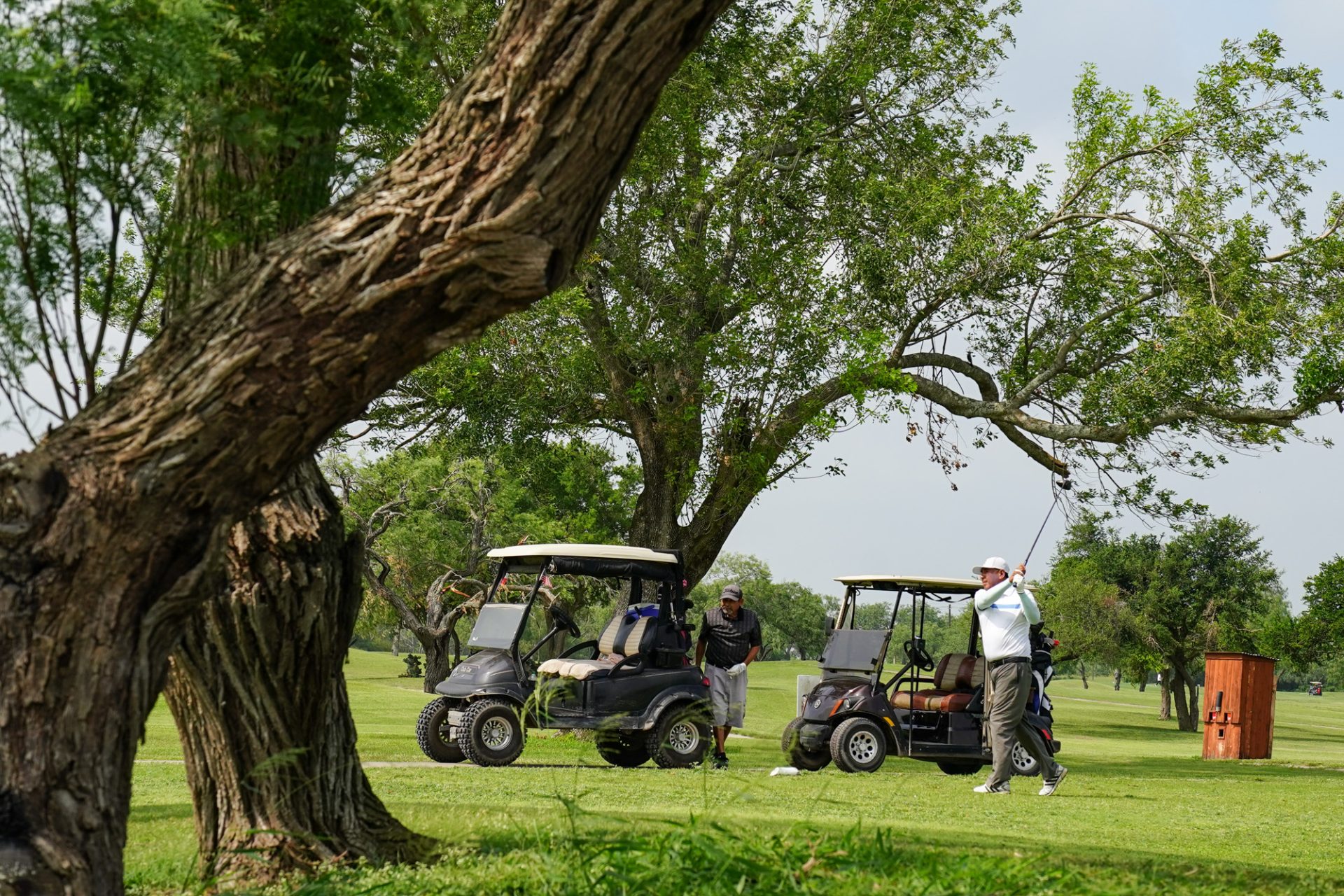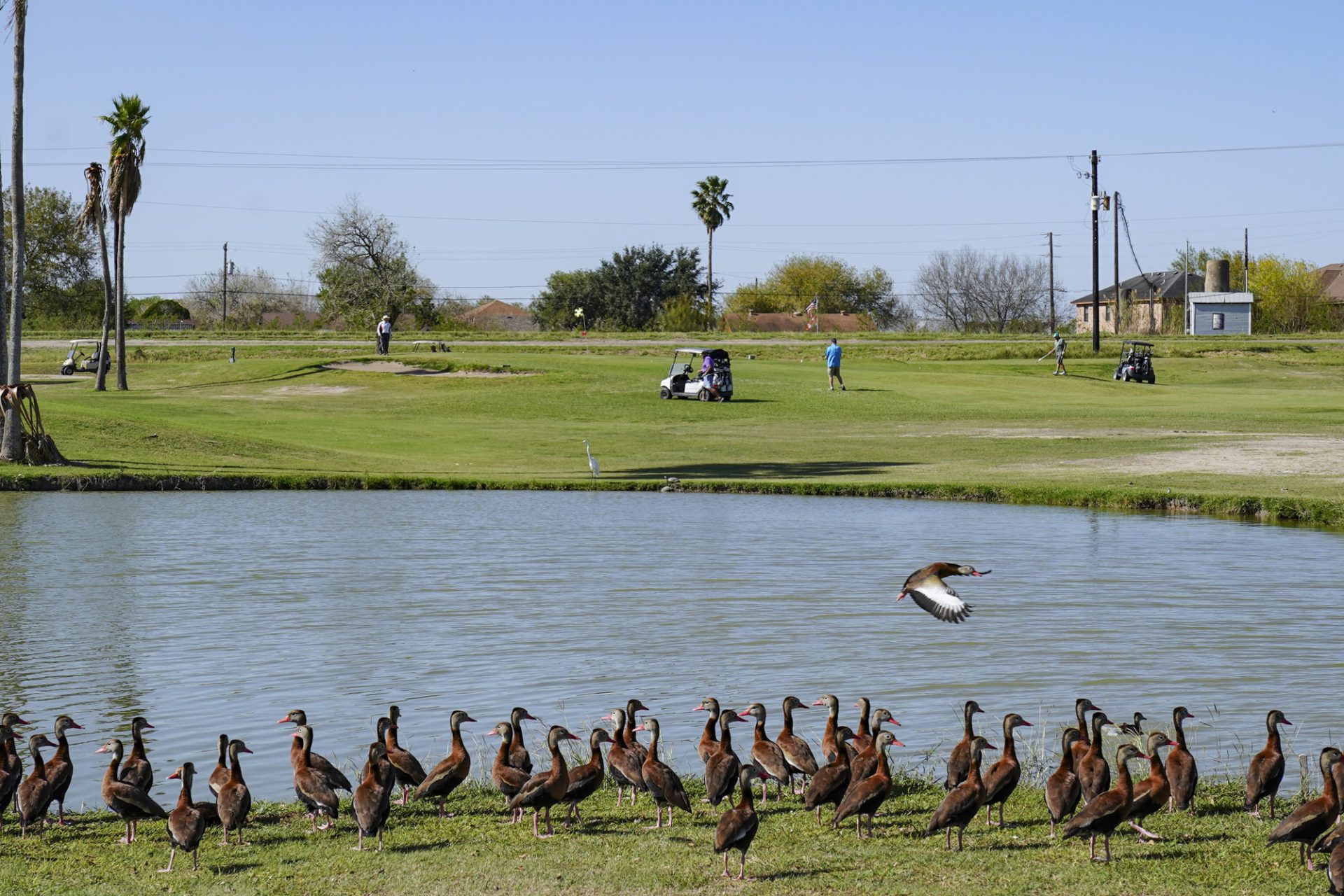|
Only have a minute? Listen instead
Getting your Trinity Audio player ready...
|

HARLINGEN — The biggest project in the Tony Butler Golf Course’s 94-year history is finally underway.
After more than five years on the drawing board and a series of setbacks, city officials are launching the $5.5 million project aimed at transforming the iconic 18-hole golf course into one of the region’s top championship courses, planning to draw more players to help pull the operation out of its 10-year hole.
Earlier this week, Mid America Golf and Landscape, the Lee’s Summit, Missouri contractor, began construction that is expected to continue through mid April 2024 to replace the golf course’s old irrigation system while renovating and expanding its greens.
Meanwhile, officials have closed the 18-hole golf course until July, planning to plant new strains of turf, leaving open the nine-hole short course known as the Executive Nine.
“It think it’s going to be the best or one of the best courses in the Valley,” Jeff Hart, the golf course’s general manager, said in an interview. “We’ll have a true championship golf course that can rival anything in the Valley.”
After the course’s biggest overhaul, Hart’s projecting the Valley’s storied golfing landmark will break-even or turn a profit within three years.
‘Huge undertaking’
Even before Hart took the job in 2019, officials had been planning the project whose price tag swelled from $3.1 million to $5.5 million as a result of the coronavirus pandemic’s material cost escalations, leading officials to return to the Harlingen Community Improvement Board for funding through the agency’s one-eighth-cent sales tax earmarked to finance so-called quality-of-life projects.
After former Mayor Chris Boswell’s administration planned the project to help pull the golf course out of a deficit dating to at least 2013, Mayor Norma Sepulveda’s office worked to boost funding to offset soaring materials’ costs.
“This is a huge undertaking,” Hart said. “It’s going to change the golf course greatly. The greens will be bigger, almost double the size they are now.”
On Friday, city officials are set to hold a groundbreaking ceremony at the golf course at 9 a.m.
For four years, Hart’s helped plan the project.
“When I saw the first trucks rolling in, I started thinking, maybe I’m dreaming,” he said, referring to the contractor’s convoy of trucks and equipment. “But now there’s no turning back.”
The construction project will cost the city revenue before it starts paying off.
During the six-month period, Hart’s projecting the overall operation will lose about $700,000, while the Executive Nine will drive in about $100,000.
Last year, the golf course generated $897,000, while running up $1 million in expenses.

Planning the project
Since last year, Houston-based golf course architect Jeffrey D. Blume, whom the past commission hired for $217,000 to design the project, has worked to cut costs amid soaring material costs without paring down his vision to transform the course.
“It’s the same vision,” Hart said.
After months of work, officials revamped the proposed irrigation system, the project’s cornerstone, to replace a 40-year-old network of leaking PVC piping.
To offset material costs, Blume trimmed the number of irrigating sprinkler heads from 1,250 to 830, Hart said, adding each unit costs about $2,500.
On the drawing board, the architect slashed the number of sprinkler heads along the golf course’s outskirts, in areas where the cutbacks won’t impact play, Hart said.
“It was out in the roughs where no one ever plays,” he said.
The new irrigation system calls for about 14 miles of underground, high-density polyethylene piping ranging in dimensions from two to 16 inches, including 10 miles of 2-inch pipe, designers said.
Covered by a 20-year warranty, the new piping is “like a really, really thick garden hose,” Hart said.
Meanwhile, a computerized central control system will operate the irrigation system.
Much of the project is aimed at transforming the golf courses’ greens, expanding them from about 3,000 to 6,000 square feet while installing a sand base, Hart said, adding the old course’s greens are clay based.
Meanwhile, officials are planning to boost the number of tee boxes from about three to five or six at every hole, he said.
“It’s going to give people better options to play,” he said.
As part of the project, he said, they’re also planning to expand the course’s water features.



